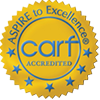With addiction, pleasure and enjoyment become deeply linked with the drug or behavior of choice. Once a client stops the behavior they often feel that “something is missing,” or that they do not know how to enjoy life to the fullest. I’d like to share some of my approaches to working with the “discovery” phase of recovery because I think that they can help anyone live a more enjoyable and creative life.
In mental health, we often use a 3-phase conceptualization of healing which was first developed in the 1800’s by Dr. Pierre Janet in reference to trauma healing. I believe that this model works well in regards to addiction, self-destructive behavior, trauma, and difficult experiences in general. The phases are…
- Safety and Stabilization: Clients learn coping skills to regulate their mood and cease self-destructive behaviors. Once stable, clients move into…
- Remembrance and Mourning: Clients process unresolved losses and feelings which may have triggered the addictive behavior or been caused the addictive behavior. After this challenging work, clients move into…
- Reconnection and Integration: Clients create a new sense of self no longer defined by addiction. In the recovery field we often call this phase “discovery:” and subscribe to the idea that “first there’s recovery” (getting sober), “then there’s discovery” (discovering all that life has to offer).
Inspired by Julia Cameron’s book, The Artist’s Way, I help clients explore these important questions:
- “What do you like?”
- “What do you like to do?”
- “How do you want to spend your time?”
Once we start spending our days in ways that we truly value and enjoy, we become much happier and more fulfilled.
I’ll share the two exercises I typically give our clients (adapted from The Artist’s Way). Give them a try and see what you discover!
I find that while these exercises focus on the “discovery” phase of recovery, they are also helpful for people focusing on the first and second stages. It’s not uncommon that I’ll give the exercises to someone who has been feeling really stressed and awful, then they come in the next week and everything is going much much better… the magic of self-care!
What Do You Like to Do?
- List 20 things that you enjoy doing. Try to think of a range of things in terms of time and money needed for the activity. For example “international travel” takes lots of time and money, but “singing in the car” does not.
- Next to each item write the last time that you did the activity.
- Are there any activities that you could do today? next week? next month? Is there something you’d like to start planning for the future?
2. A Week of Kindness
- In this exercise, you will make a concrete plan to do one kind thing for yourself each day this coming week. Maybe you can choose things from your list of things you like to do! Make sure that your plan is realistic in terms of your schedule and responsibilities. Tell someone about you plan and follow-up with them at the end of the week.









